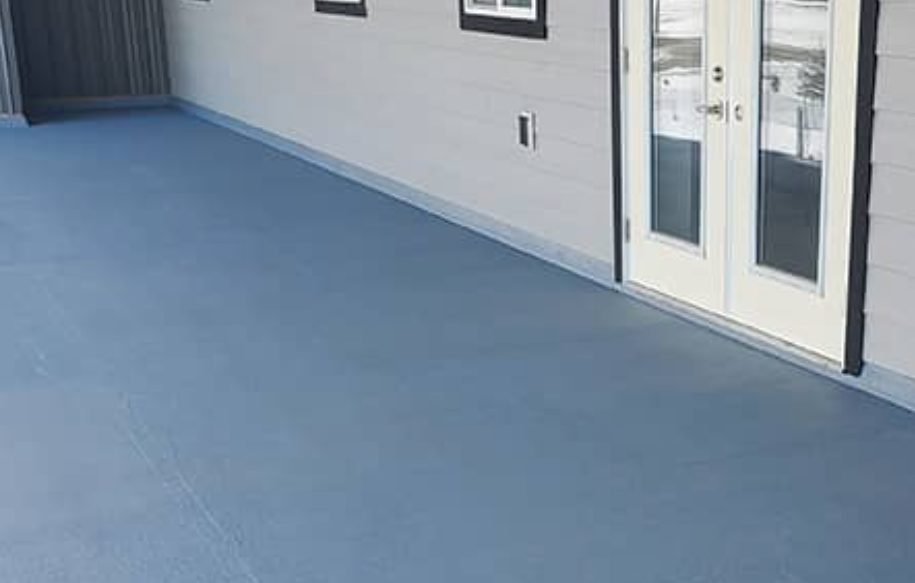It's no secret that concrete, though durable and widely used in construction, is susceptible to water damage. This permeability can lead to structural issues like mold, mildew, and weakening of the structure. This is why applying a reliable waterproofing paint for concrete is a necessity. And when it comes to the best waterproofing paint for concrete, Liquid Rubber tops the list.
How is Liquid Rubber the go-to choice for DIYers and contractors? Let's dive in and find out.
Understanding Liquid Rubber
Liquid Rubber has been a part of the construction industry for about 200 years, with its genesis in combining natural bitumen with various materials to create a waterproofing solution for roofs.The modern-day Liquid Rubber we see today is a result of continuous advancements and improvements. Today's Liquid Rubber is a specialized Polyurethane coating that was originally developed about 40 years ago, in the eighties.
Why Liquid Rubber is the Best Waterproofing Paint for Concrete
Liquid Rubber's popularity as the best waterproofing paint for concrete stems from its numerous advantages. Here's what you need to know.
Versatility
Liquid Rubber is versatile, and can bond to nearly any type of medium that isn't oil-based, including concrete, stone, metal, bitumen, wood, PVC, metals, and zinc. It can be used in any shape or size, making it a one-size-fits-all solution for waterproofing needs.
Durability
After curing, Liquid Rubber cures to create a resilient and elastomeric, fully flexible waterproof membrane. While the longevity of Liquid Rubber depends on various factors like wear and tear, exposure to UV rays, and corrosive substances, it's generally recommended to reapply after ten years. This makes it a cost-effective solution compared to other waterproofing paints that might require frequent reapplication.
Safe to Use
Liquid Rubber is safe to use without any special protective clothing. If it comes in contact with your skin, it's not dangerous or toxic and can be easily removed with baby oil. It's non-toxic and VOC-free, making it an environmentally friendly choice.
Easy Application
Applying Liquid Rubber is simple. It can be easily applied using standard tools like a roller, a paintbrush and even a spray gun. You only need to ensure the surface is clean and dry before applying it.
Liquid Rubber for Various Applications
Liquid Rubber's versatility extends to its range of applications. Let’s take a look at the most popular.
Foundations and Basements
Liquid Rubber forms a seamless, waterproof barrier that protects your foundation and basement from water damage. It adheres perfectly to the concrete surface, ensuring a leak-proof seal.
Walls and Floors
Whether it's the walls of your home or the floors of your garage, Liquid Rubber provides an effective waterproof barrier. Its ability to adhere to a variety of surfaces makes it the ideal solution for these applications.
Roofs
Liquid Rubber is an excellent choice for waterproofing roofs. It forms a waterproof membrane that protects against leaks and water damage.
Ponds and Tanks
Liquid Rubber is non-toxic and safe, making it the perfect solution for waterproofing ponds and tanks. It forms a waterproof barrier that prevents leaks and protects the structure from water damage.
Liquid Rubber: Affordability & Reliability
Another reason why Liquid Rubber is hailed as the best waterproofing paint for concrete is its affordability. While offering superior protection, it doesn't burn a hole in your pocket. It's a budget-friendly solution that doesn't compromise on quality or performance.
And that's not all. Liquid Rubber also offers unmatched reliability. When applied correctly, you can rest assured of its ability to safeguard your structure against water damage.
Wrapping Up
Liquid Rubber is an all-rounder in the world of waterproofing paints. Whether you're a professional contractor or a DIY enthusiast, Liquid Rubber offers a solution that's easy to apply, long-lasting, and effective at protecting your structure from water damage.





